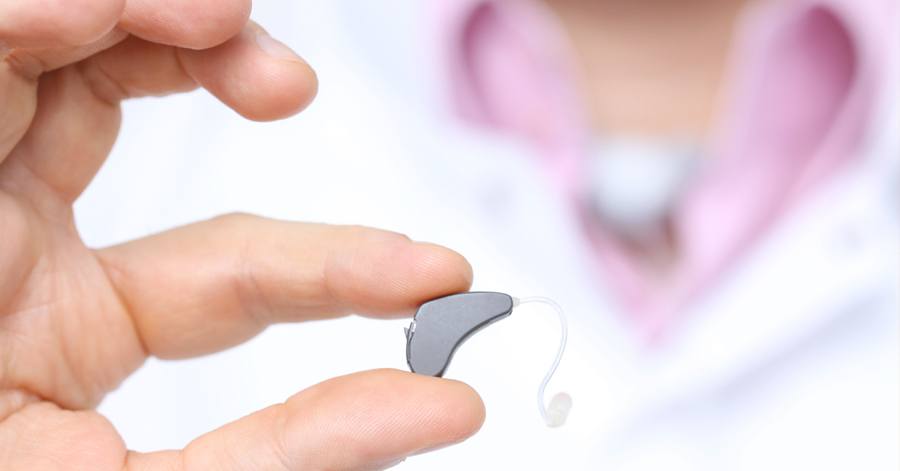Although the rechargeable hearing aid have been around for over 30 years, these devices have only achieved marginal success. This can be attributed to charging stations that are difficult to operate. With old rechargeable hearing aids, they would only work as long as the device was placed in a very specific position, which caused problems for users suffering from dexterity issues.
Other limitations on the previous iterations of the rechargeable hearing aid included perceived limited reliability, size, and circuit limitations. Considering all of these potential restrictions, most users have overlooked rechargeable hearing aid batteries in favor for the traditional zinc-air batteries.
However, cutting-edge technology has completely revolutionized the industry and how those with hearing loss experience the world. Continue reading to learn more about the evolution and benefits of the rechargeable hearing aids and their batteries.
The Evolution of the Rechargeable Hearing Aid Batteries
Over the last decade, rechargeable hearing aid batteries have undergone drastic improvements. Two of the primary options are the nickel-metal hydride (NiMH) and nickel-cadmium (NiCd) cell.
Nickel-Cadmium Cell Batteries
NiCd cell batteries have been determined to be less environmentally friendly. Thee batteries also have what is understood to be a “memory effect.” The memory effect refers to the way the batteries gain a “memory” of the previous durations of time before it is charged.
Batteries that demonstrate this phenomenon can lose performance over time. When the battery is recharged at half capacity, it could lose the ability to fully charge. Instead, the best process for charging NiCd cell batteries is to completely drain it and then recharge it.
Nickel-Metal Hydride Cell Batteries
Most experts agree the NiMH battery is the better solution for rechargeable hearing aids. These batteries almost double the power provided by NiCd batteries. At the same time, these batteries do not have cadmium, lead, mercury, or other dangerous metals. As a result, NiMH cell batteries are much more environmentally friendly.
Benefits of the Rechargeable Hearing Aid Batteries
Today’s digital hearing aids are packed with mounds of technology and more features than ever before, such as mobile phone compatibility. However, these new capabilities will drain battery life exceptionally fast and force users to regularly change batteries.
To ensure the optimum experience for hearing aid users with hearing loss, the batteries must be user friendly, powerful, and convenient. These innovative features are powered by innovative batteries that come with several shocking benefits.
Superior Ease of Use & Comfort
With the several technological improvements to hearing aids, there is no need to deal with replacing small batteries. This facet is especially helpful for those suffering from age-related health complications, such as Parkinson’s disease, dementia, dexterity issues, and arthritis.
Instead, you can simply place the device on the charger while you sleep. When you wake in the morning, you will rise to a fully-charged and refreshed aid for your daily use.
Peace of Mind
For a large number of hearing aid wearers, the concern the battery will die at the worst possible time is a real fear. The impending idea of a failed battery can create a stressful and embarrassing experience.
However, when you charge your battery over night, you will not have to worry about the device dying midway through the day. Best of all, users of rechargeable hearing aids will never have to worry with locating the battery for installation.
Long Shelf Life
Virtually all of the rechargeable hearing aid batteries offered today are bolstered by a high-quality, strong shield. This additional measure ensures the battery doesn’t drain or dry out in a premature manner.
This was a common problem associated with the previous iterations of zinc-air batteries. As an added bonus, several tests have concluded that rechargeable batteries have a much higher capacity to withstand inclement weather and severe conditions.
Ample Flexibility
For some users, the sole commitment to using rechargeable batteries is too restrictive. If you fall into this category, many hearing aids offer both rechargeable batteries as well as zinc-air batteries. This bolstered flexibility offers crucial backup power for circumstances you may forget to recharge the battery.
Green & Environmentally Friendly
When it comes to green, environmentally-friendly solutions, rechargeable hearing aid batteries are exponentially more kind to the planet than the disposable batteries. Anytime you dispose of a battery, it exposes water sources and the environment to potentially harmful acid and lead.
Over a period of three years, two digital hearing aids can require the disposal of over 300 hearing aid batteries. Conversely, two rechargeable hearing aids will only average six rechargeable batteries over the same period.
Contact North Shore Hearing P.C.
One of the most common misconceptions about rechargeable hearing aid batteries is they are more expensive. However, when you consider the continual cost of replacing zinc-air batteries, a rechargeable hearing aid battery makes dollars and sense.
If you have never considered the benefits of a rechargeable hearing aid, now is the perfect time to review your options at North Shore Hearing P.C.
Contact us today to schedule an appointment at North Shore Hearing P.C.

